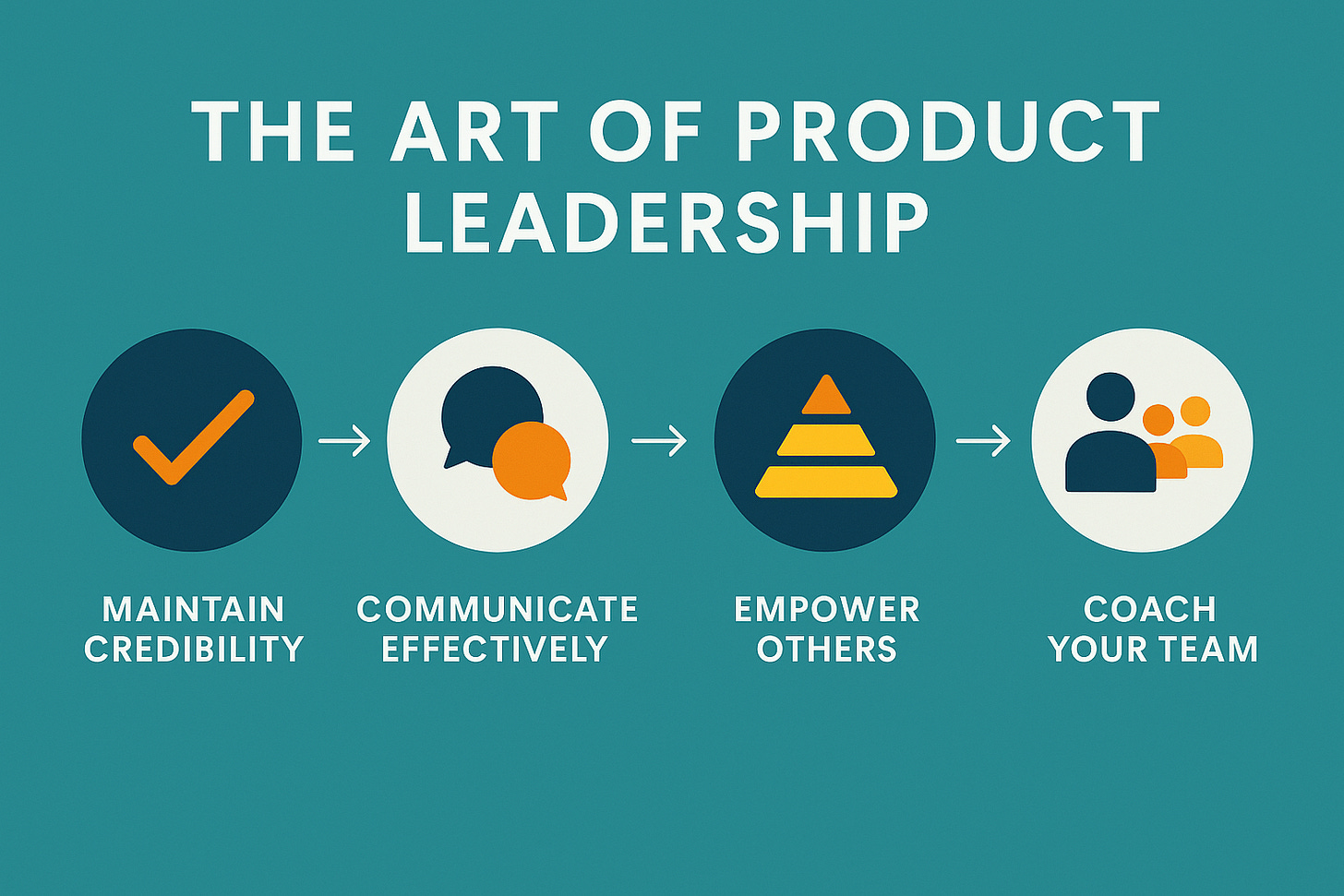The Art of Product Leadership: Lessons in People, Process, and Coaching
How to Be a Great Product Leader (Without Burning Out or Burning Bridges)
Great product leaders aren’t just managing backlogs and shipping features. They’re building high-performing teams by cultivating trust, clarity, and a culture of ownership.
In this post, I’m sharing lessons I’ve collected over years of leading product teams—lessons about credibility, communication, coaching, and how to help your team actually thrive. Whether you’re a new manager or a seasoned leader, I hope this gives you a helpful framework (and a few reminders) for leading well.
🧱 Part 1: Leadership Starts with Trust and Credibility
1. Always Maintain Credibility
If your teammates and manager can’t rely on your word, they’ll start second-guessing everything. That’s why consistency matters—especially in small things, like time estimates. Don’t habitually under- or overpromise. Delivering on your word builds long-term trust.
2. Build Social Currency
People should want to follow your lead. That means making others look good, giving credit generously, and operating in a way that serves everyone’s best interest.
3. Make People Feel Heard
Don’t just tell people what to do—include them in the process. Ask questions like:
“Steve, what do you think?”
Even small gestures make a big difference in helping your team feel seen, valued, and invested.
4. Adapt Your Communication Style
Talk to creatives differently than you would to an executive.
Executives want brevity and clarity: check the box and move on.
ICs love the nuance and detail—meet them there.
📐 Part 2: Manage Expectations with Clarity
5. Give Ranges, Not Absolutes
When estimating effort or timelines, communicate uncertainty. Say “8–12 hours,” not “10 hours.” Ranges help set better expectations and create space for change.
6. Focus on How You Manage, Not Just What
You don’t need to be the expert in everything. Ask thoughtful questions. Read between the lines.
“Why are we working on X? How is that helping us get to Y?”
That kind of thinking helps you lead any project—technical or not.
7. Prep Before Meetings
Don’t use meetings to gather basic info. Reach out beforehand so people aren’t caught off guard. It helps your team come off sharp, prepared, and aligned.
8. Interrupt With Care
If a meeting is drifting, find the right moment to step in:
“This is really helpful context, but I want to make sure we stay on track…”
Interrupt to refocus, not to dismiss.
🧠 Part 3: Understand Your People Deeply
9. Learn Your Team’s Personality Types
Is someone an over-estimator or under-estimator? A last-minute finisher or early bird? Learning their quirks helps you anticipate how and when things get done.
10. Prioritize with Clear Eyes
Before panicking, ask:
What’s the worst-case?
What’s the best-case?
What’s urgent vs. what’s important?
11. Focus on People First
Ask: “What’s in your way?”
Remove friction. Be a shield. Set them up to do their best work.
🔍 Part 4: Improve the System, Not Just the People
12. Use a Systems Mindset
Don’t just treat symptoms. Ask why repeatedly to get to the root cause.
Melissa thought the copywriter was slow, but the real issue was a bottleneck in the approval process.
She fixed the system—not the person.
13. Get Communication Out of Your Head
Make assumptions explicit. If “copy approved” means different things to different people, clarify it.
14. Question Legacy Processes
Ask:
“What’s something we’ve always done—and is it still useful?”
15. Create the System. Don’t Be the System.
People shouldn’t always come to you. They should be able to do things without you. That’s real scale.
👥 Part 5: Coaching Is Your Real Job
16. Your Employees Are Your Customers
Ask how they like to receive feedback. Provide recognition generously. Coach them to be problem-solvers, not just doers.
17. Teach Ownership, Not Just Execution
Guide with questions. Empower people to find their own solutions—even if their idea is different than yours. Ownership leads to growth.
18. Management Is a Partnership
“I’m in this with you. I’m here to help however you need.”
Support, listen, push. That’s how great managers show up.
🔥 Part 6: Avoid the Trap of Being “Busy”
19. Stop Being Busy
Busyness is not productivity. If you’re always reacting (Slack, email, meetings), you’re probably not thinking strategically—and your team can’t rely on you.
Use This System to Reclaim Time:
Make a list of everything you do
Automate what you can
Delegate what should be done by others
Cut what doesn’t matter
Focus on what only you can do
🏁 Final Thoughts: Coach First, Ship Second
“If you’re not being proactive about your team, you’re ignoring them.”
Even if your job is product, your real job is people.
Invest in your team.
Build systems that scale.
Communicate with clarity and care.
Coach, don’t just delegate.
A great, healthy team will do all the work. Your job is to help them get there—and then get out of the way.

